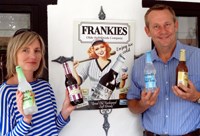How Woolworths lost its mojo

But, on Wednesday, 1 February 2012, the Advertising Standards Authority (ASA) upheld a complaint by Frankie's regarding Woolworths plagiarism of its slogan and Woolworths, feeling that consumer sentiment was against it, announced that it would remove the product from its shelves.
The word of mouth has changed.
The way you build a word-of-mouth brand is to deliver a remarkable customer experience and hope that people would tell their friends and, if they had a similar experience, they would tell their friends in turn and so on until the market all agreed.
Used to take a lot of time
In those days, this took a lot of time because people could only maintain a relatively small network of connections and would only tell two or three or five or a dozen friends. Now, when the marginal cost of publishing is zero, in an instant the average connected consumer can publish to thousands of readers and reach millions in a few seconds. The word soon spreads
I was the client service and strategy director for Woolworths' early advertising agency when it crossed to "the dark side" and became an advertiser.
It did so because of the market's perception that quality, certainly in its clothing section, had declined. This was also the time when the Woolworths' food stores were still being set up. Advertising was the price Woolworths was paying for the reduction in standards and quality and the strap line "quality for life" was designed to turn that perception around.
Revealing

When the Frankie's story broke on Talk Radio 702 end of last year and spread like wildfire through the social networks, I could not help thinking how far from the word-of-mouth brand Woolworths had moved. Apart from the absolutely appalling manner in which it handled the social media firestorm, it was revealing in how it was defended by some.
In essence, the argument ran that, because all the big retailers behave this way, it should be expected. But in a connected world, a social world, you don't want to be like everyone else; you want to be remarkable, you want to be spoken about, you want people to share their experience with their friends. It's about the buzz you generate by the special experiences you deliver that grows your brand.
In the absence of any research to prove it, I suggest that the reaction on the internet and then in the market was so vocal, not only because this was the powerful corporate bully riding roughshod over an entrepreneur, but because Woolworths has taken a position of quality, integrity and doing good and its customers and fans felt cheated and let down when suddenly they could see a new truth.
Trust has already gone
Woolworths can paper this over and things will go on as they were but, as with the wife who was cheated upon and forgave, the trust has already gone and when something like this happens again, all hell will break loose.
A more savvy Woolworths would not have waited for days before even responding to the accusations and then would not have done so in the defensive manner it did and, what is worse, would never have waited for the ASA ruling to force its hand before it would announce that it would remove the product from its shelves and do the right thing by Frankies.
I think that many people would have wanted to believe Woolworths and it would have been easy to see Frankies as an opportunistic startup with nothing to lose. Not now, though.
Ironic
The irony is that Woolworths were once one of the best in the world at generating the buzz it needed to be a standout brand. What happened with Frankies and how it handled the incident demonstrates something completely different. It demonstrates that it has lost the set of skills and attitudes it needs to be amazing and get buzz. It has joined the pack with the rest of the retailers.
If the price of a poor product and a poor customer experience is advertising, this is really good news for broadcast media owners - you should be getting a boost to your turnover.
Woolworths, you seriously need to look at how you curate your brand in the future; all the clues are in how you used to do it. The lesson is that you are no longer in control - your customers are.
For more:
- Bizcommunity Search: Woolworths Frankie
- ASA: The full ruling in digital format
- Mail & Guardian Online: The full ruling as a pdf
- Google News Search: Woolworths Frankie
- Twitter Search: woolworths OR frankies OR woolworths frankie OR woolworths frankies
About Walter Pike
- Did Publicis dumping the Cannes Lions come as a surprise to you? - 26 Jun 2017
- Outsurance's Father's Day debacle is a wake-up call for business to understand social issues - 21 Jun 2017
- About the Zika virus, the Olympics and the decreasing importance of audience - 22 Jul 2016
- Only people generating bad publicity say there is no such thing - 28 Jun 2016
- The real "big idea" - 28 Jun 2016
View my profile and articles...
